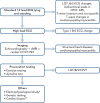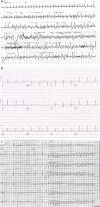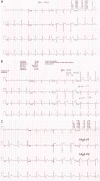Sudden Cardiac Death and Arrhythmias
- PMID: 29967683
- PMCID: PMC6020177
- DOI: 10.15420/aer.2018:15:2
Sudden Cardiac Death and Arrhythmias
Abstract
Sudden cardiac death (SCD) and arrhythmia represent a major worldwide public health problem, accounting for 15-20 % of all deaths. Early resuscitation and defibrillation remains the key to survival, yet its implementation and the access to public defibrillators remains poor, resulting in overall poor survival to patients discharged from hospital. Novel approaches employing smart technology may provide the solution to this dilemma. Though the majority of cases are attributable to coronary artery disease, a thorough search for an underlying cause in cases where the diagnosis is unclear is necessary. This enables better management of arrhythmia recurrence and screening of family members. The majority of cases of SCD occur in patients who do not have traditional risk factors for arrhythmia. New and improved large scale screening tools are required to better predict risk in the wider population who represent the majority of cases of SCD.
Keywords: Arrhythmia; coronary artery disease; risk factors; screening; sudden cardiac death.
Conflict of interest statement
Disclosure: The authors have no conflicts of interest to declare.
Figures






References
Publication types
LinkOut - more resources
Full Text Sources
Other Literature Sources

